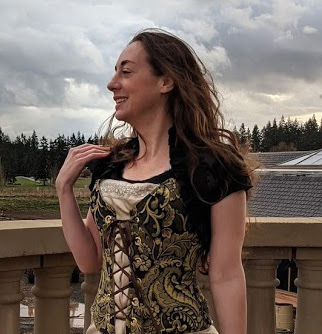Illustrations in Fantasy Novels
I’m always considering ways to make the characters in my story more realistic. Illustrations seemed like an effective way of doing that, but I never practiced drawing or painting. My sister-in-law is an artist and I asked her if she’d be willing to try making some images for the novel. She gave it a shot and completed images of Flarence and Claire, but they’re not in the book because she didn’t want them to be public. That’s why she gave me the contact information of Lothar Speer, who is an old friend of hers.
There were a lot of aspects of illustration production that I wasn’t aware of
when I requested it to be done. My sister-in-law didn’t want her work in my
book because she prefers still-life and the kinds of images I asked for
required the characters to appear as if they were in motion. I realized that
she excelled at still-life, but I’ve seen her use human figures in her
paintings before, so I didn’t expect it to be a big deal. It turns out
transitioning from stationary to movement is difficult because the techniques
require completely different uses of shading since portraying movement is done
by having some sections lighter and making them gradually darker (that’s
probably a simplified summary, but that was my takeaway when it was explained
to me).
Another lesson I learned is that when working with illustrators there isn’t any
room for partial ideas. You need a clear image in your mind and be prepared to
stick with it. This wasn’t an issue when developing the inside pages. As
expected, Lothar asked a ton of questions about where the scene took place and
how the characters should be positioned. It became an issue when finalizing the
cover. Lothar spent a lot of time on the image, but he didn’t include the text.
The deal was that once the cover image was complete I would email it to the
publisher who would add the title and author information. Based on the cover of
the first book, I speculated that the title would be on the top and my name would
be on the bottom. The problem was, I didn’t tell Lothar that was just
speculation and I didn’t confirm with the publisher that it would be the case.
The first version of the cover was reversed, with the words “Public Display of
Aggression” on the bottom and my name on the top. I didn’t expect it to be a
big deal because the characters were still visible. Once again, I didn’t grasp
the difficulties that accompanied this change. Lothar was under the impression
that the top of the cover would be filled with the long title, so he dedicated
more time to the details of the bottom portion. When he saw the title on the
bottom of the cover blocking the parts that he’d spent days perfecting, he took
it as an insult. It took a few panicked conversations with both Lothar and the
publisher to change the cover but thankfully we were able to come up with an
image that was agreeable to everyone.
I realize that my experience isn’t representative of everyone who has worked
with illustrators, but if anyone is considering hiring an artist I hope this
post provides some advice. Decide if you want the image to be stationary or
portray movement and ask the artist if they are adept in one or both. If the
artist is not going to be putting in the title themselves, make sure you’re
able to tell them exactly where it will be placed, how big the font will be,
and, if you can, what color it will be. These are things I didn’t dwell on
because (pardon the cliché) I didn’t know what I didn’t know. Since I’m not an
artist I didn’t realize that it isn’t enough for an image to be visible; some
portions of images are given more attention than others and are intended to
jump out at the audience. I also can’t appreciate how much a single picture can
mean for an artist’s career. As a writer, I’m accustomed to taking a step back.
There may be a chapter that a reader doesn’t like, or somebody may notice a
plot hole, but I’m not bothered by those kinds of specified issues. It’s
unlikely that someone will pick up a book and read only one chapter, and people
can find plot holes in any work of fiction if they look hard enough. I’m
concerned with my book as a whole, not individual paragraphs, and I’m
interested in the overall audience response instead of a few isolated nitpicks.
For artists, I’ve learned, it’s different. Somebody may only ever see one of
their works, which means they may only be known by that single project. That’s
why it’s important to be crystal clear with artists about what you want when
hiring them, and to be patient when they take a long time to complete it. For
all they know that project may be the only thing a patron will ever associate
with their name.
Find out more at:
website: http://www.hughfritz.com
Facebook Page: https://www.facebook.com/
Stories-by-Hugh-Fritz- 397896477228957








0 comments:
Post a Comment